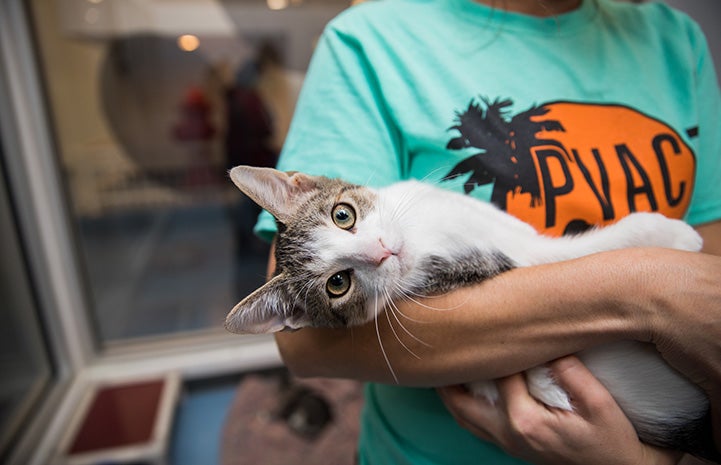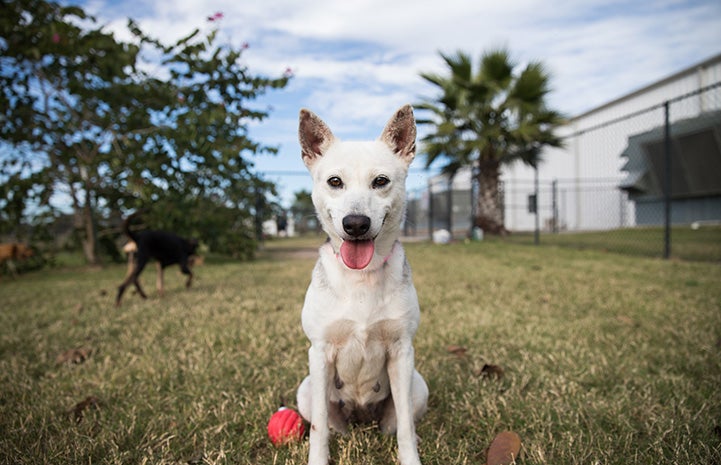One amazing gift: Maddie's Fund donates $1.5 million to help save up to 12,000 dogs and cats

It’s going to take a lot of changes in animal sheltering to get the entire country to no-kill by 2025. Change is often difficult and messy. It can even feel impossible when people are already overwhelmed, and animals’ lives are at stake. And yet when a kind, knowledgeable person steps in to work alongside others to tackle challenges one by one, suddenly hope emerges and the team can overcome those challenges knowing that someday killing pets will be part of the past.
#thankstomaddie
Best Friends Animal Society has a great track record of putting those kind, knowledgeable people in place in shelters. And now, thanks to a generous grant from Maddie’s Fund®, even more positive change is in the works in an area of tremendous need. Since the beginning of June of this year, Best Friends has been expanding its presence at Palm Valley Animal Center in Edinburg, Texas, and the Humane Society of Harlingen in Harlingen, Texas.
Both shelters are in the Rio Grande Valley near the Mexican border, and both shelters, like others in the area, are grossly under-resourced. That has meant years with save rates hovering around 20%, and thousands of pets dying in the shelters every year. It’s time to change that — and now it’s possible.
“We are incredibly grateful and excited to receive generous funding from Maddie’s Fund, which has been responsible for saving hundreds of thousands of lives through their innovative grants,” says Julie Castle, Best Friends CEO. “This embed expansion grant will save up to 12,000 dogs and cats from the highest priority shelters and put all of the participating organizations on the pathway to sustainability.” Thanks to Maddie’s Fund, leaps and bounds will be made toward our shared goal of making this country no-kill by 2025.

Help for animal shelter staff
The Maddie’s® Shelter Embed Project in the Rio Grande Valley made it possible to put Best Friends staff in positions at the two shelters where they can help roll out plans that will change the way both shelters operate. The embed program places experienced Best Friends staff in long-term, but temporary, leadership positions.
These embedded leaders help improve operations (e.g., cleaning and intake protocols), implement lifesaving programs (e.g., adoptions and fostering) and in general provide support and a morale boost to the hardworking and stretched-thin shelter staff, who may not be familiar with best practices or simply not have the time to implement them. In just the first two months of expanding the program in the Rio Grande Valley, the shelters saved more than 3,800 animals, far exceeding expectations.
The confidence to save more shelter pets
Terri Hinojosa, the Harlingen shelter supervisor, says, “The help from Best Friends has given us the confidence to implement new lifesaving techniques.” The shelter has started open adoptions, in which the impetus is to encourage people to adopt, rather than look for reasons to deny them. And the rescue program’s goal now is to try and save all the dogs in their care who can be saved. Terri says, “We made a Facebook page to network all our dogs, especially those at risk. We have saved many lives that would never have been saved if Best Friends hadn’t reminded us that every single life counts.”
At Palm Valley Animal Center, thousands more lives are being saved already, thanks to the new community cat program, field services training, use of a better cleaning product for disease prevention across the shelter and in animal control trucks, and efforts to fill in the spay/neuter gaps. In the last year, Palm Valley has also completely overhauled how they relate to dogs. They now have better medical protocols and more dogs in foster care. Plus, adoptions are way up — a whopping 349 in July 2019 compared to just 97 in July 2017.
Animal shelters in the Rio Grande Valley are among the largest yet least-funded shelters in the country. They have been left behind in the region’s growth. Because of their invisibility, they’ve had some of the country’s largest gaps in lifesaving. Simply put, they need the most help. Luckily, they are ready for that help. They are ready to change, and we’re there with them every step of the way.
Find out how you can save lives too

This article originally appeared in Best Friends magazine. You can subscribe to the magazine by becoming a Best Friends member.
Photos by Sarah Ause Kichas